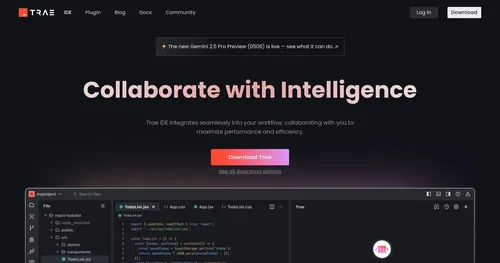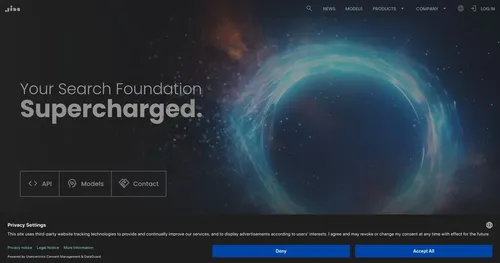Datature
Datature is a no-code platform that handles end-to-end vision AI workflows from data annotation to model deployment. It supports tasks like object classification, detection, keypoint annotation, and pixel-level segmentation. Users upload visual datasets, label them with tools including bounding boxes and polygons, and collaborate via built-in approval systems. The platform processes images and videos for applications in industries such as smart cities, healthcare, and manufacturing.
Training occurs through drag-and-drop interfaces where teams configure hyperparameters like batch size and epochs. Models build on frameworks such as YOLO and evaluate against ground truth with visual comparisons. Recent additions include t-SNE embedding visualization for clustering similar assets and detecting anomalies. Deployment uses APIs for integration into applications, with options for edge devices and cloud inference. Security features cover data locality and compliance standards.
Datature competes with Encord, which focuses on active learning but requires more setup time. SuperAnnotate offers strong multimodal support yet charges higher for enterprise features. Datature’s free starter plan suits small teams, while paid tiers scale affordably compared to these rivals. Users appreciate the 10x faster annotation speeds and ease for non-experts. Drawbacks include limited advanced scripting for power users and potential support waits on custom integrations.
The platform serves production needs with streamlined MLOps, reducing coding barriers. It integrates metadata like geo-coordinates for enhanced model robustness through fusion techniques. Partnerships such as with MemryX accelerate edge AI.
Teams gain from its focus on practical outputs. To begin, select a core task like detection, prepare a small dataset, annotate collaboratively, train iteratively, and test deployments early for refinements.
Video Overview ▶️
What are the key features? ⭐
- Annotation Tools: Enterprise-grade tools speed up labeling with AI assistance for bounding boxes, segmentation, and keypoints, cutting time by 10x.
- Model Training Workflows: Drag-and-drop interface builds custom training pipelines, tuning hyperparameters like epochs and batch size without code.
- Performance Evaluation: Visual comparisons against ground truth help assess model accuracy and identify improvement areas quickly.
- Deployment APIs: Flexible integrations enable real-time inference on cloud or edge devices with built-in security controls.
- Embedding Visualization: t-SNE projector maps image embeddings into interactive 2D clusters to spot patterns and duplicates easily.
Who is it for? 🤔
Examples of what you can use it for 💭
- Healthcare Diagnostician: Applies segmentation models to medical images for precise tumor detection, speeding up reviews and improving accuracy in patient care.
- Agriculture Field Manager: Uses object detection on drone footage to monitor crop health and automate yield estimates, optimizing resource use across fields.
- Retail Inventory Specialist: Deploys classification tools to tag shelf stock from camera feeds, enabling real-time stock alerts and reducing manual counts.
- Construction Safety Officer: Leverages keypoint annotation for worker pose tracking in videos, flagging unsafe positions to prevent accidents on site.
- Smart City Planner: Integrates detection models with traffic cams to count vehicles and adjust signals, easing congestion during peak hours.
Pros & Cons ⚖️
- User-friendly no-code setup
- 10x faster annotations
- Strong collaboration tools
- Limited script customization
- Free tier caps storage
FAQs 💬
Related tools ↙️
-
 LM Studio
An AI platform that helps users discover, download, and run local large language models
LM Studio
An AI platform that helps users discover, download, and run local large language models
-
Devin AI that codes, debugs, and deploys software autonomously, streamlining development tasks
-
CodeGuide Generates detailed project documentation for AI coding projects, streamlining development
-
 Trae
An adaptive AI IDE designed to revolutionize the coding experience
Trae
An adaptive AI IDE designed to revolutionize the coding experience
-
Buzzy Turns ideas into functional web or mobile apps in minutes without coding
-
 Jina AI
A platform for building multimodal apps in the cloud, including neural search and generative AI
Jina AI
A platform for building multimodal apps in the cloud, including neural search and generative AI

